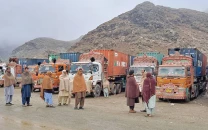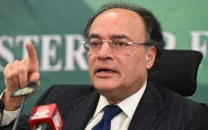Budget disparity: Untold statistical anomaly of state versus public development
A brief look into the last 15 years of current expenditure against PSDP.

The targeted PSDP amount in FY15 is 34% of the estimated current expenditure. DESIGN: CREATIVE COMMON
Figures on current expenditure (government spending) and development allocation (the Public Sector Development Programme) address this technical allocation. They indicate that the government spending increased from Rs650 billion in fiscal year (FY) 2001-02 to Rs3.5 trillion in FY15. However, spending under the Public Sector Development Programme (PSDP) was increased from Rs130 billion a year to Rs1.2 trillion in the same period. The PSDP allocation in 2001-02 was 20% of the current expenditure.
The targeted PSDP amount in FY15 is 34% of the estimated current expenditure. Analyse these figures and we can conclude that while the government spent on itself lavishly, it persistently disallowed the required sums for development, leaving Pakistan short of funds that could have helped major sectors to provide relief to the masses as well as to the business community.
The total current expenditure made during FY02 to FY15 was Rs19.7 trillion, while the total PSDP money spent was Rs5.6 trillion – which is 25% of the amount.
Over the span of 15 years, the actual amount of PSDP spent remained less than 19% of the total current expenditure. Ironically, no observer of public finance or development projects funded by the state took notice of this dismal trend.
The per-day current expenditure in FY02 stood at Rs1.8 billion, while the targeted per-day current expenditure in FY15 is Rs9.5 billion, showing an increase of Rs7.7 billion.

On the other hand, the per-day spending on PSDP projects was Rs356 million in FY02, which increased to Rs3.2 billion in the 2014-15 budget, showing a difference of Rs2.8 billion.
During the 15 years, the current expenditure eventually went up by 19%, while the PSDP amount increased only by 11%. There have been major spikes in PSDP allocation in some years, while the increase has been more than lacklustre in others.
Involving 15% to 20% of loan injection each year, the PSDP allocation goes to major projects in the following sectors: infrastructure, social, production (agriculture, industry and minerals), water, transport and communications, power, physical planning and housing etc.
Another sorry aspect of the situation is that, in view of the mounting inflation, the Planning Division allows up to 15% escalation in the project fund to contractors working on them, but the annual increase in the total PSDP allocation is almost always less than 10%.
However, not a single case has been reported to the Public Accounts Committee over the past 15 years against illegal and undue cost-escalation allowed to contractors by the Planning Division. Nor has the overseeing machinery ever reported against under spending from the project-fund released to the contractors. That is why most projects either remain incomplete or poorly carried out despite heavy funding under PSDP allocations each year.
Unlike in the developed countries, there is no tradition of submitting reports on delay and overspending on projects to the Cabinet, the Parliamentary Committees or to the public in general. Nor are the officials of the Concept Clearance Committee, the National Economic Council and other relevant institutions held responsible for defying regulators. On the other hand, parliamentary and media forces, and the judiciary have never been found vigilant on pointing out and punishing the exorbitant increases in current expenditure in bold neglect of public development.
The writer has worked with major newspapers and specialises in analysis of public finance and geo-economics of terrorism
Published in The Express Tribune, April 13th, 2015.
Like Business on Facebook, follow @TribuneBiz on Twitter to stay informed and join in the conversation.



















COMMENTS
Comments are moderated and generally will be posted if they are on-topic and not abusive.
For more information, please see our Comments FAQ